To reduce the pressure on the world's productive land and to help assure long-term food security, writes Herbert Girardet, city people are well advised to revive urban or peri-urban agriculture. While large cities will always have to import some food, local food growing is a key component of sustainable urban living.
Get Started for FREE
Sign up with Facebook Sign up with X
I don't have a Facebook or a X account
 Your new post is loading... Your new post is loading...
 Your new post is loading... Your new post is loading...

Colleen Blankenship's curator insight,
February 19, 2018 1:50 PM
Another of Jared Diamond's theories. Agree or disagree? Support your stance!

Richard Aitchison's curator insight,
March 22, 2018 1:07 PM
As everyone knows, water is key. We usually talk about water in geography has a way to export/import or for key military purposes. Here we are talking about survival and certain states within in India (29 to be exact) that were suffering through a drought and whose rivers had been completely dried up. India has tried a new plan to try to get water to these areas, by diverting water from there other rivers to these states. This is an interesting way to try to deal with this problem, however is it really feasible to do this? Would this eventually causes problems in the areas in which we are taking the water from? Also this would be very expensive and India , who is still a growing country, could hurt them economically for years to come. No one has said this will work and while yes, its horrible to see what has happen to these areas, but is this just a quick fix. What would the plan be for a future drought, is there anyway to come up with a better plan? Possibly will these people need to move in the future. Our rivers and lands are constantly changing so as people we might have to move away from areas that which were once habitable, but now may not be.
Douglas Vance's curator insight,
April 23, 2018 12:26 PM
Extreme drought combined with inefficient agricultural practices and the depletion of groundwater resources have creates a water crisis in India. However the solution to the drought seems poorly planned and likely to fail. There is no evidence showing that a massive water diversion project like this will succeed in alleviating the effects of such a massive drought.
brielle blais's curator insight,
May 1, 2018 6:45 PM
Drought is a factor of the physical geography of an area that is in trouble. India is heavily depended on monsoon rains, and for two years have no received what they normally do, and 330 million people are affected by it. The country is planning to divert different rivers to solve the issue. "The government says the scheme will irrigate 35,000 hectares of land and generate 34,000 megawatts of electricity." This will exponentially help those dealing with the water crisis, but also help with other thing such as electricity.
FDH Editor Team's curator insight,
March 9, 2016 7:50 PM
No one should be surprised that more developed societies are more wasteful societies. It is not just personal wasting of food at the house and restaurants that are the problem. Perfectly edible food is thrown out due to size (smaller than standards but perfectly normal), cosmetics (Bananas that are shaped 'funny') and costumer preference (discarded bread crust).
This is an intriguing perceptive on our consumptive culture, but it also is helpful in framing issues such as sustainability and human and environmental interactions. In a technologically advanced societies that are often removed form the land where the food they eat originates, food waste needs to made more explicit.
Tags: food, agriculture, consumption, sustainability, unit 5 agriculture.
Katerina Stojanovski's curator insight,
March 10, 2016 6:10 AM
No one should be surprised that more developed societies are more wasteful societies. It is not just personal wasting of food at the house and restaurants that are the problem. Perfectly edible food is thrown out due to size (smaller than standards but perfectly normal), cosmetics (Bananas that are shaped 'funny') and costumer preference (discarded bread crust). This is an intriguing perceptive on our consumptive culture, but it also is helpful in framing issues such as sustainability and human and environmental interactions. In a technologically advanced societies that are often removed form the land where the food they eat originates, food waste needs to made more explicit.
Tags: food, agriculture, consumption, sustainability, unit 5 agriculture.

GTANSW & ACT's curator insight,
October 10, 2015 6:09 PM
Things to consider when teaching about food production from a geographical perspective - remember to link to Biomes.
Lilydale High School's curator insight,
August 17, 2015 7:33 PM
Consequences of living near industrial sites - even if it is farming.
Matthew Richmond's curator insight,
September 28, 2015 12:23 PM
This is pretty insane. I've seen other video's where it is a similar situation around chicken farms in the U.S. The people can't even go outside most of the time due to the smell, and it makes me wonder how much of the way we eat is truly devastating the planet. Beyond the smell, I can't help wonder what these types of farms would do the ground water beneath.

Jamie Strickland's curator insight,
July 7, 2015 12:08 PM
Once again, the term GMO has been used without regard for process. We need to make sure our students have a clear understanding of what it means for a crop to be "genetically modified" now. Although I get some eyerolls, this is why I continue to include an origin of agriculture segment in every introductory class I teach.. 
Jose Soto's curator insight,
August 5, 2015 9:48 PM
Yes, the title is somewhat misleading (isn't that almost expected these days?), since humanity has been selectively breeding crops since the first agricultural revolution and genetic alteration can occur independent of human intervention. Humanity has always been using the best technologies available to improve agricultural practices. The term GMO though, is usually reserved for scientific, technological modifications that were unimaginable 100 years ago.
Tags: GMOs, technology, agriculture.

Claire Law's curator insight,
April 26, 2015 2:01 AM
Ten engaging resources on the geography of food
Kaiden-Leigh Cloete's curator insight,
April 29, 2015 11:15 PM
This topic connects to our agricultural unit. This article describes the explaining of food. Knowing where our food comes from is a big component in lit today, with all the GMO's going around we don't know what we r busy consuming daily. Having more information in our minds about food would help decrease the long term affects of genetically modified organisms, help maintain a healthy economy, provide more resources such as water, because if GMO's do come to an end then the water will not be as polluted as it is now due to the runoff from the remaining chemicals in GMO's, and also provide a healthy environment for everyone. 
Lydia Tsao's curator insight,
May 26, 2015 2:10 AM
I absolutely love this article. It touches on many of the most important and challenging issues facing food production in the world, ranging from food manufacturing ethics to global hunger. I think it's interesting how, although we all eat food everyday, we don't think about the many implications associated with the production and consumption of food. To more privileged people, food is not a big deal, as anyone can get food at any time of day. However, for people who are trying to solve the problems associated with food in the modern world or for people who are suffering from hunger and malnutrition, the information presented in this article is extremely important. Brilliant minds can come together to propose potential solutions for all the problems facing food distribution. I can't wait for the day every child can go to bed with a full stomach, and I am willing to do my part to help make that happen.
Sid McIntyre-DeLaMelena's curator insight,
May 29, 2014 11:35 AM
British artist Mishka Henner took photographs and enhanced the colors of feedlots to reveal the agribusiness of meat production. Photographs of feedlots are considered illegal and the legal repercussions of Mishka Henner are not clear at the moment, but the photographs are shocking and reveal again how little Americans know about their food production. Americans have changed the places and utilized them to build agribusiness empires and have introduced new problems to the landscape of feedlot and farming towns.
Shane C Cook's curator insight,
May 27, 2015 4:46 AM
This article makes me sickened. With previous knowledge of factory farms I know of the horrors that go on but this takes the cake. These pictures shown in the article depict the chemical and waste spill off which I am absolutely sure this is NOT good for the environment.
BrianCaldwell7's curator insight,
March 16, 2016 3:56 PM
Beautiful imagery at one scale tells an unsavory story at another.

Gabriel Olson's curator insight,
February 13, 2015 2:59 PM
We ought to know something about where our food comes from... 
Eden Eaves's curator insight,
March 24, 2015 1:04 AM
Unit 5 Some of these maps are easy to guess, such as cotton being grown in the south, but what about others like pigs being raised in the mid-west and North Carolina??? We are so used to having only to make a quick stop at the nearest grocery store to grab our weekly essentials that we don't always think about where it naturally comes from. Also preservatives have come so far as to keep things fresh for long periods of time that where it originates is not a problem because it can be shipped in a refrigerated truck with still time left for it to sit in your fridge for a few days.
BrianCaldwell7's curator insight,
March 16, 2016 3:34 PM
This 12 question quiz is a great way to introduce students to spatial patterns of agricultural products in the United States. Sometimes just knowing regional stereotypes can be helpful, but being able to make an educated guess about where an agricultural product is comes from requires a basic understanding of economic and climate patterns. This quiz is a good way to test that knowledge and introduce them to these spatial patterns.
Tags: trivia, spatial, regions, food, economic, food production, agriculture.
BrianCaldwell7's curator insight,
March 16, 2016 3:41 PM
The New York Times article associated with the video above offers a great glimpse into the inner works of how agribusiness technologies have transformed the American family farm.
Tags: agriculture, food production, agribusiness, unit 5 agriculture. |
Sophie Wilson's curator insight,
August 31, 2016 10:33 AM
This video shows the process of potatoes moving from farm to factory in America and how they are turned into chips. It shows how the potatoes are planted, grown and turned into chips.
Zack Zeplin's curator insight,
April 24, 2016 5:16 PM
The seed industry, one of the largest industries in modern agribusiness, is quickly being swallowed up by the global giants that lead the seed industry. All over the world small seed businesses are being bought out by larger businesses who seek to mass produce their own genetically modified seeds and strengthen their grip on the global seed market. In American agriculture seed giants rule by providing the highest quality seeds to grow the cereal grains in the U.S. produces. But as a result the consumer benefits, farmers can now run farms that aren’t as capital-intensive because of the biotechnology that goes into these seeds. However it is also important to realize that the number of seed companies is dwindling, and that there are only a few large corporations that control all of the seeds that the world needs to grow enough food to survive. I found this article to be very helpful in shedding some light on how the seeds that go into our food is handled, and the truth on how modern agriculture is run.

Shelby Porter's curator insight,
November 4, 2013 10:39 AM
It isn't surprising that the more a country has developed, the more wasteful they are. I just think that we need to change this standard. We can not keep this up if we want to sustain ourselves for centuries to come. If we are going to change our consumption culture, we need to look at why it has become the way it is. Why do we see food as unappealing? This is an interesting video and certaintly makes you think twice about throwing anything away. 
Kenny Dominguez's curator insight,
November 29, 2013 6:13 PM
Ted explains it well how we all waste perfectly good food that people would like to eat. Also it was amazing how much food was in the dumpsters that was just a day or week old. That meat could feed hundreds of people that are struggling to eat and all that meet to waste. 
megan b clement's curator insight,
December 16, 2013 1:51 AM
Ted talks about just how wasteful our planet is. How we just ignore the issue and act like it will not affect us in the future. When he shows you video and pictures of massive piles of the ends of a loaf of bread or all the food that Stop and Shop throws out because it does not "look" good for the customer. How every little bit of help counts you can try to make a little bit of an effort to be less wasteful. We have so much unnecessary waste. Like when he uses the example of how many people throw away the ends of a loaf of bread then he shows the waste of the ends of bread in massive piles it makes you sick. Especially with all of the hungry people in the world we need to be more resourceful.
BrianCaldwell7's curator insight,
March 16, 2016 3:24 PM
This is a hard read, but it is important to understand that there is a dark underbelly to many of the economic systems that are reshaping the world today. Sometimes we ask all the wrong questions, like "why is organic, local, or fair trade food so expensive?" We should really be asking why the other options are so cheap.
This, unfortunately is part of the answer. This is a 4-part series (I-camps, II-labor, III-Company Stores, IV-Child Labor) from the LA Times that has excellent pictures, videos, and interviews highlighting the working conditions of farm workers in Mexico. For an audio version, here is an NPR podcast interviewing Richard Marosi, the investigator behind the story.
Tags: food, economic, labor, globalization, food production, agribusiness, agriculture, unit 5 agriculture, indigenous.

Jose Soto's curator insight,
August 5, 2015 9:21 PM
Food waste is a tragedy that we all know happens, but the economic system does not work efficiently to maximize the global food production (Disclaimer: it is HBO's John Oliver, so there is some language and references that might not be appropriate for all audiences).
Tags: food, agriculture, consumption, sustainability, video, unit 5 agriculture. 
GTANSW & ACT's curator insight,
August 6, 2015 4:20 AM
Food waste is a tragedy that we all know happens, but the economic system does not work efficiently to maximize the global food production (Disclaimer: it is HBO's John Oliver, so there is some language and references that might not be appropriate for all audiences). Tags: food, agriculture, consumption, sustainability, video, unit 5 agriculture.
Sue Byrnes's curator insight,
August 6, 2015 6:06 PM
Food waste is a tragedy that we all know happens, but the economic system does not work efficiently to maximize the global food production (Disclaimer: it is HBO's John Oliver, so there is some language and references that might not be appropriate for all audiences).
Tags: food, agriculture, consumption, sustainability, video, unit 5 agriculture.

Eden Eaves's curator insight,
May 24, 2015 2:28 PM
Almost 80 percent of Americans live in urban areas and that means many people are wanting to grow their own food in the busy city life. To learn how to properly do this, these people turn to land-grant colleges and universities to give then helpful advice. Many colleges do help with urban and rural ares, but there is only one one in the entire country that is devoted singularly to urban farming; The University of the District of Columbia. This is a great example of the distribution of agricultural and a great way to educate people on the proper way to cultivate and harvest your own food in small, limited spaces. It also proves that we really can prosper everywhere with the right tools and knowledge about urban farming.
Seth Forman's curator insight,
May 26, 2015 6:30 PM
Summary: This article goes into extensive detail about urban agriculture and new technologies and techniques that must be brought to urban agriculture.
Insight: This article relates to unit 5 because it talks about a new and modern form of agriculture that could become very important when considering the portion of the population living in urban and suburban areas. 
Michael Amberg's curator insight,
May 26, 2015 10:20 PM
This could help develop sustainable communities and promote organic growth throughout the country. Which could potentially improve the standard of living

Kaitlin Young's curator insight,
September 17, 2014 12:10 PM
In a time where more people are moving away from their rural roots to try and make it big in the city, I think it's becoming more and more important that we focus on how to utilize our urban surroundings in a beneficial way. These photos are proof that it is possible, and I believe that cities in the United States should be more open to urban farming. It could be a way to not only take pressure off of families in cities trying to feed their children, but will also educate all sorts of people on where food comes from, and the importance of the environment. 
Maria la del Varrio's curator insight,
December 13, 2014 3:16 PM
Urban agriculture is a reality in third world countries. In Dominican Republic almost everyone in the country side have its own land to plant necessary food and fruits. The most popular is plantain and fruit is orange. In urban areas is rare to see this, so is surprising to see how central Asians are doing it.
BrianCaldwell7's curator insight,
March 16, 2016 3:58 PM
I love Yann Arthus-Bertrand's photography; so many of them are geography lessons in and of themselves as he captures compelling images of the cultural landscape. This particular gallery shows 32 stunning images including this one above showing urban agriculture in Geneva, Switzerland.
Tags: agriculture, food, landscape, images, urban, unit 5 agriculture, unit 7 cities.
Emerald Pina's curator insight,
March 22, 2015 9:39 PM
This article shows how crops were entirely different 8,000 years ago. It shows how much we have breeded and affected the natural crops. With the example of peaches, watermelons, and corn, the article shows how the natural crop didn't taste as good and was a lot smaller. The natural peach had 64% edible food; whereas the 2014 peach had 90% edible food. The pictures comparing the natural and artificial crops also illustrated how the many varieties of that specific crop had grown and where the crop is found has grown. Lastly, the diagrams compares the water and sugar percentages. This article paints a good picture as to how much mankind has affected our land and agriculture. Also, how much our crops have changed due to selective breeding.
The article gives a good illustration of topics in Unit 5: Agriculture, Food Production, and Rural Land Use. The article shows how selective breeding has affected many crops. It gives a good view as to how selective breeding and agriculture has been affected and changed in the Neolithic Agriculture Revolution. The article explains what what life was like and how it changed in the Neolithic times. This article is really interesting in showing how crops were changed.
BrianCaldwell7's curator insight,
March 16, 2016 3:41 PM
I think the term 'artificial' in the image might be misleading and it depends on your definition of the word. Humans have been selectively breed plants and animals for as long as we've been able to domestic them; that is a 'natural' part of our cultural ecology and has lead to great varieties of crops that are much more suitable for human consumption than what was naturally available. Long before climate change, humans have been actively shaping their environment and the ecological inputs in the systems with the technology that their disposal. This is a good resource to teach about the 1st agricultural revolution.
Tags: food, agriculture, consumption, unit 5 agriculture.
Matthew DiLuglio's curator insight,
November 27, 2013 4:59 PM
I mentioned this through an allusion in another article, but GMOs and the movements against them perplex me. I don't think that fossil-fuel burning engines are natural, but many anti GMO people that claim they are bad for the environment leave me completely stunned as to their intolerance for what could possibly benefit other people. I feel very much an outsider when I examine many topics of controversy related to GMOs, and I am quite sure that I have consumed them before -- and loved them? as for the FDA... I don't approve of the FDA. They like more money coming into their pocket more than bettered well-being of citizens. When I mentioned to my doctor that I wanted to apply for medical marijuana for a series of conditions that I have following a severe accident, I was told that they refused because it was not fully endorsed, approved, or even allowed by the FDA. That really pissed me off because I suffer from excruciating pain every day and night of my life. Could you imagine being a poor person in need of food, and the only viable way of getting food was through the production of GMOs...? and then some pseudo-hippie activists that didn't live through the 1960s trying to be all like, "We don't want anyone to have GMOs!"... I pose that abstractly, because I view most everything with a level of abstraction and distance from the situation, sampling perspectives with which I may empathize or consider. I keep thinking that this world around us all came from a big bang, with other possible universes before that, and something before that... and I really can't see Capitalism ever becoming as bad as it is, with such disregard for other people's wellbeing, until I look at today's world.
BrianCaldwell7's curator insight,
March 16, 2016 4:02 PM
So many articles about organic or genetically engineered foods are written with someone with a very defined position on the subject (much like abortion, gun control or other controversial topics). This article is an attempt to separate out the good the bad and the ugly regarding genetically engineered foods.

Shelby Porter's curator insight,
November 4, 2013 11:03 AM
These pictures are very interesting and makes you think about the kinds of breakfast you saw when growing up. These pictures allow us to see the kinds of food cultivated in these areas of the world and how they interprete the use of each one. The pictures also show us how each place is related. For example, some of the dishes looked alike in that most of the plate was breads. It makes you wonder where that tradition came from. These pictures also let the viewer in on the development or wealth of the country. Some countries only have a piece of bread and a coffee for breakfast, where other places have huge platefuls of all different kinds of food. Does the amount of food you eat for breakfast have to do with how developed your country is? Food seems so simple, but it can lead to many different interpretations for people. 
Courtney Burns's curator insight,
November 21, 2013 9:17 AM
Typically when I think about different cultural foods I think about lunch or dinner rather than breakfast. When I think about Italy I think about meatballs, pasta, pizza, and gelato. When I think about Germany I think about a lot of meats. However what never really comes to mind is breakfast. Breakfast is one of my absolute favorite meals on the day. I love going out to breakfast and getting some eggs, homefries, sausage, and maybe even a grilled blueberry muffin. This summer I traveled to Italy and that was the first time I realized that breakfast is just as different in their Culture as their lunch and dinner. It was interesting how different things were. They had toast and yogurt, but the yogurt didn't taste the same as it does in America. It is amazing how different each countries breakfast is in comparison to what we are used to. Some things we consider lunch might be served in another countries breakfast meal. For example Deli meats. It is interesting to see how different each culture really is. 
Victoria McNamara's curator insight,
December 12, 2013 12:10 AM
Countries each have their own foods that are unique and freshly made by families everyday. They use foods that are frequently grown and found in the area to make their meals. For example china eats a lot of fish because it is part of their culture. Also people of spanish and mexican cultures are known for cooking spicy delcious foods. Food is apart of what creates cultures.

Jake Red Dorman's curator insight,
December 17, 2014 11:36 AM
It’s crazy to see how desperate some of these people are to get working and how much they do for such a little reward. These people are working longer and harder than probably all Americans and they are barely surviving. They work for survival. It’s hard for some of these people to stay healthy, especially in the harsh conditions and tight living spaces that these people have to deal with on an everyday basis. 
Brian Wilk's curator insight,
March 22, 2015 2:10 PM
Corporations are always looking for the cheapest base product to import. Unfortunately for the laborers of Mexico, their country does not enforce globally accepted standards of labor. The US cannot police other countries' policies and procedures, but we can educate our own consumers about the working conditions behind the product they buy. The consumers then have a choice; do they want to pay 49 cents a pound for bananas or 99 cents. What is more important, the health and welfare of the employee who picked the produce or the financial well-being of the consumer who purchases it? This obviously is big business for Mexico and the US should apply some pressure to motivate our friends south of the border to foster better working conditions for their employees. It would seem to me that Mexico could afford to pay their workers a little more and still be competitive given their proximity to the US. I think I will start buying my bananas from Ecuador....
|




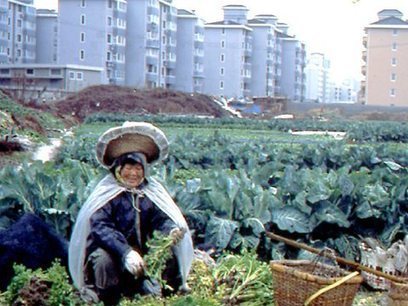




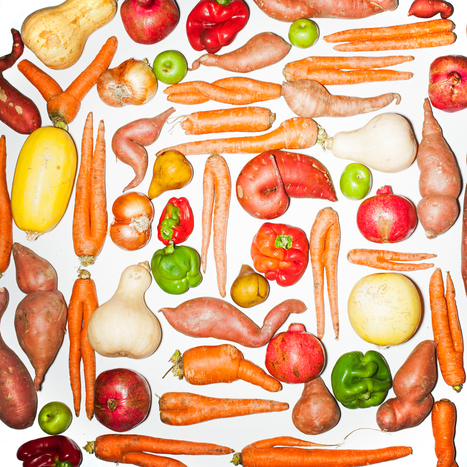



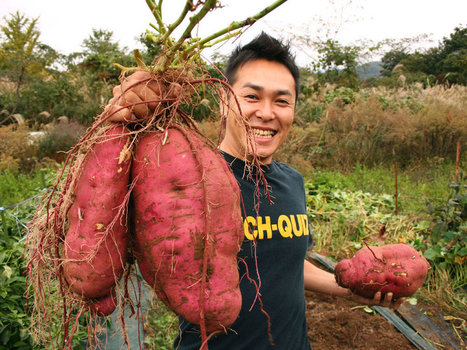











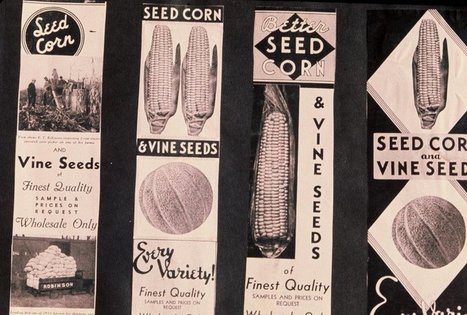

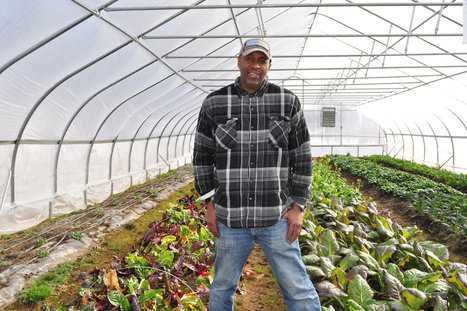
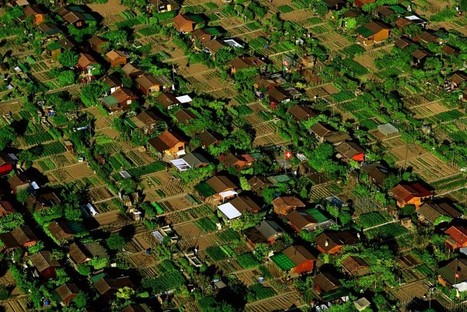









This article links well with my Authentic Learning post on my blog http://mattgdlt.weebly.com/the-whiteboard.html . A unit of work could easily be designed around the concept of sustainable food in an urban environment. The topic links in to the year 9 content descriptor (ACSSU176) under Science Understanding Biological Science.
Urban agriculture is right at the perfect intersection for human geographers who focus on both urban networks and food systems--clearly this is an important overlap that deserves a more detailed look.
Tags: food, consumption, sustainability, socioeconomic, food desert, food, urban, unit 5 agriculture.